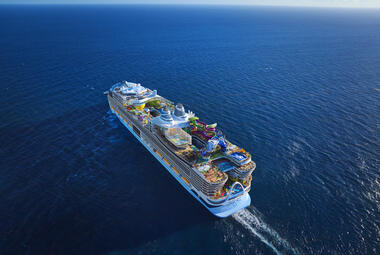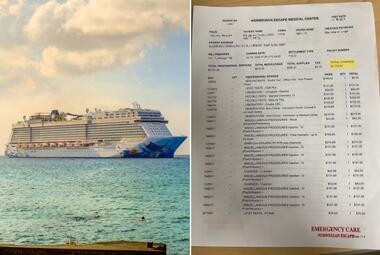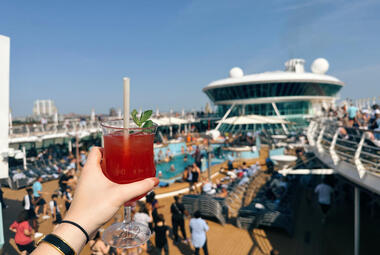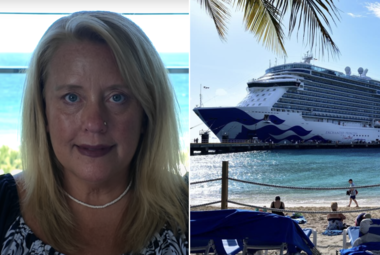Ocean liner vs cruise ship, are the two vessels in competition? Not quite.
You don’t hear too much about ocean liners nowadays, yet cruises are a hot topic. So much so, “cruisetok” is a trending hashtag on social media platforms like TikTok and Instagram. The hashtag “#cruise” alone has almost 15 million posts associated with it.
The glamour, the high-class dining, the endless entertainment—cruise ships are evolving more and more to captivate people all over the world. But before these extravagant ships took the seas, there were ocean liners.

Ocean liners, sleek in build and extensive in length, may look very similar to a cruise ship at first glance. However, the two vessels are quite different. As cruise ships are made for leisure, a time to escape, ocean liners were designed to bring their passengers from Point A to Point B in a timely fashion, regardless of how dire the weather conditions are.
Is a tropical storm on the way? No pressure for an ocean liner, which is built strong and sturdy to navigate its way through any seasonal storm.
The purpose of this ship is speedy transportation from one continent to another. In order to accomplish this, ocean liners have deeper drafts for more stability, longer bows which help them move through waves, higher free boards, and stronger materials.
Dawn of the ocean liner

People have been crossing oceans regularly since the reunion of the Old World and the New World. But the origin of the ocean liner comes far later with the advent of the steam engine. Until then, traveling across the Atlantic would remain arduous, remarkably dangerous, and most relevant to this topic, unreliable.
So while sailing vessels had always carried passengers across bodies of water, they could not do so on a regular scheduled service and thus were not truly ocean liners.
In 1840, the RMS Britannia was completed for the British and North American Royal Mail Steam Packet Company (later called Cunard) and was the first ocean liner in today's sense of the term.
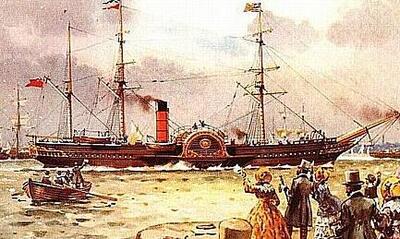
Constructed of wood and powered by steam, Britannia could more or less transport passengers across the Atlantic in a routine and timely manner. However, the newness of steam technology led a prudent and cautious public to perceive these new ships as unreliable, which meant that steam powered liners would be fitted with auxiliary sails in their infancy in order to provide backup and additional efficiency.
Despite the hesitation, it wasn't long before the Atlantic was filled with steamships running scheduled service between ports on either side of the ocean.
Cunard ships Umbria and Etruria were the last auxiliary liners to be built.
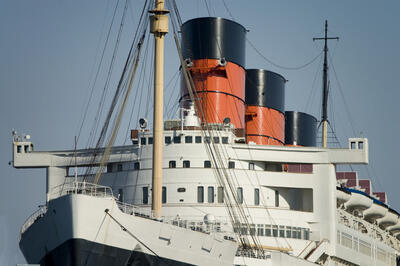
In an increasingly connected world, these ships became the only way to cross. And so the money and incentives were available to build stronger and faster ships, leading to an explosion of technological development in the industry.
The years between 1840 and 1920 saw the transition from auxiliary to paddlewheel to propeller driven ships and increase in maximum size from 2300 tons to 52,000 tons and a decrease in the total westbound Atlantic Crossing time from 13 days, 12 hours to four days 11 hours.
Until this point, travel across oceans was reserved for the select few who had the resources and the time to spend weeks or months in transit.
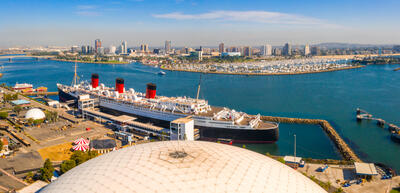
Now, travel across oceans was better and more accessible than ever, linking the world in new ways.
Traveling by ship had also risen from a grueling risk to a glamorous adventure. This shift in perspective is proven by the fact that during this time, an ocean liner might occasionally take a break from its transoceanic services to take paying passengers on pleasure cruises.
This temporary change in operations would be due to fluctuations in economic pressures, shipping capacity and decisions made by the shipping companies.
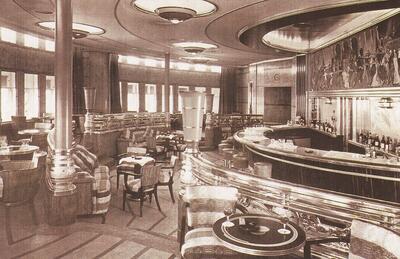
At the same time, there were even a small number of purpose-built cruise ships dating back to 1900 when the Prinzessin Victoria Luise was launched. Even these ships, though, were built like ocean liners in most respects, and the vast majority of passenger traffic was carried by the ocean liners.
End of the ocean liner era
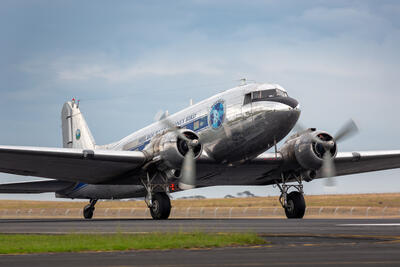
World War Two led to the rapid development of aviation technology, and not long after the war was over, jet-powered airliners were able to cross the Atlantic with passengers.
By the early 1960s, construction of new ocean liners for the Atlantic run had all but come to a halt.
As the shipping lines began to struggle to fill their already existing ships, they spent an increasing amount of time taking passengers on cruises while trans and intercontinental travel had shifted to the airlines.
Dawn of the cruise ship
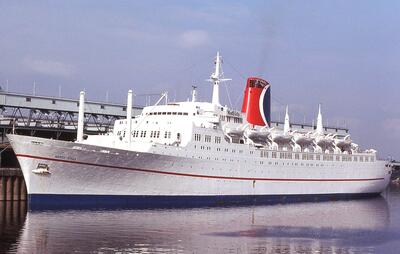
In the early days of cruising, the ships were old liners, not built for the type of work they were now engaged in. But the purpose of cruising at the time was the destination and the joy of being at sea. Besides, the ocean liner style was what the public was used to.
In 1972, Carnival Cruise Line started with a 12 year old liner, Empress of Canada. Similarly, Norwegian Cruise Line got its feet off the ground with the purchase of the SS France, which had renovated and renamed Norway.
Their deep drafts limited access to ports with deep harbors. They were designed with an emphasis on capacity rather than comfort, and they were expensive to build and operate, being engineered with strong materials to weather extreme conditions.
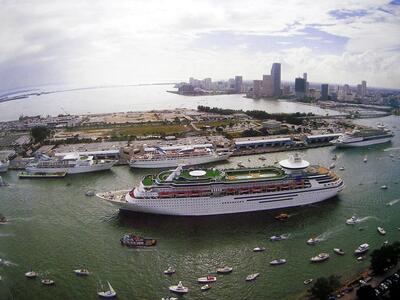
So when the shipping companies and cruise lines realized that cruise ships, because they spend most of their time in fair weather, did not need the technical capabilities of ocean liners, the floodgates were opened for change and development.
Modern cruise ships
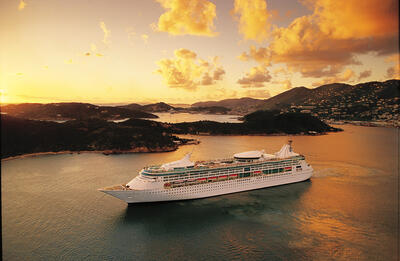
Between 1987 and 2024, the maximum cruise ship size has increased from 73,000 gross tons to 248,663 gross tons, but it's the design of these ships, not the size, that marks their difference from their ocean liner predecessors.
Today's cruise ships are famous for their boxy appearance and more recently, their often uncanny resemblance to hotels.
All of this is because the objective of their construction has changed. Namely, cruise lines need ships to offer the most and highest quality amenities to the maximum number of people at the lowest cost.
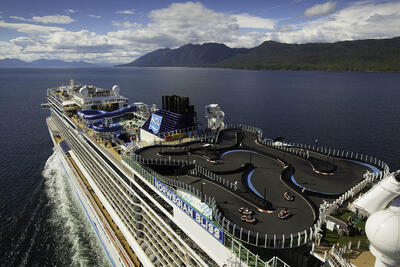
The newest cruise ships today have short bios, low freeboard and towering superstructures that seem to just stop. These design choices create a lot of space for these accommodations.
At the same time, though, it means that today's purpose built cruise ships don't fare well in harsh weather. While ocean liners once powered through some of the most extreme weather the ocean can deliver, cruise ships handle weather differently. Cruise ships can avoid bad weather by canceling or changing ports of call or going around weather systems, which is common during the Atlantic hurricane season.
That isn't to say modern cruise ships aren't safe. Modern technologies and the sheer size of cruise ships keep them safe while they fulfill a very different mission than that of the ocean liners of yesteryear.
Bottom line

In short, cruise ships are different from ocean liners, of which there is only one remaining. RMS Queen Mary 2 is still making runs across the Atlantic today and is the only major ship in the world carrying passengers between continents on a scheduled line. And even Queen Mary 2 spends much of the year cruising.
Cruise ships do occasionally cross oceans, though, and often with passengers. But these repositioning cruises are a necessary inconvenience for cruise lines as ships move between different regions between the seasons.
That being said, some enjoy these voyages, as it offers more time to spend enjoying onboard activities: water slides, musical theatre shows, zip lines, and even skydiving simulators. There's more than enough to keep busy during these periods at sea.
Read more: What it's like on the world's last ocean liner: Cunard’s Queen Mary 2




